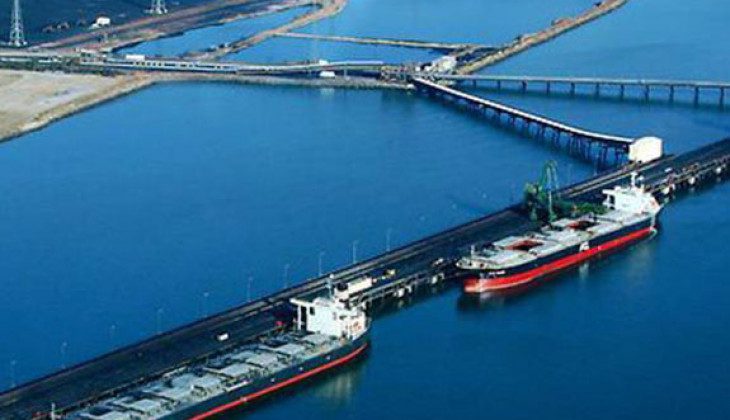Indonesia’s sea toll program is on its way to reaching its eighth anniversary. To evaluate its progress over the years, UGM Center for Transportation and Logistics Studies (Pustral) hosted a webinar discussing the impact of the sea toll program on the growth of disadvantaged, remote, outermost, and border areas in Indonesia.
Opened by the Center Caretaker Professor Bambang Agus Kironoto, the event was attended by around 130 participants from various institutions: the Coordinating Ministry for Maritime and Investment Affairs, the Ministry of Transportation, the Ministry of Villages, Development of Disadvantaged Regions, and Transmigration, regional governments, logistics businesses, and academics.
Head of Special Sea Transportation of the Ministry of Transportation Capt. Rudy Sugiharto revealed the progress of the sea toll program was improving from year to year. Figures-wise, the program has recorded an increase in the number of transit ports from 31 in 2016 to 114 in 2021 and the number of vessels from 6 fleets in 2016 to 32 in 2021. Total sea toll cargo in 2016 was below 100,000 tons, and now it has risen to around 350,000 tons. The number of routes served has reached 32 from previously only 6 in 2016.
“We have now begun to see the impact of the sea highway in maintaining the availability of basic and important goods in disadvantaged, remote, outermost, and border areas,” said Rudy, Friday (15/10).
According to Rudy, sea toll establishment can help control costs/tariffs for transporting goods through the sea, reduce price disparities, and maintain price stability for basic and essential goods. It can also encourage infrastructure development, economic growth, investment, and sovereignty in the areas. Therefore, the optimization of the said program must continue, one of which is by creating new connectivity and trade patterns.
“We hope that the optimization of application usage and vessel performance at loading ports will continue. We also need the local government support for this program to succeed,” said Rudy.
The government has been running the sea toll program since 2015 with the main objective of facilitating the distribution of goods to accelerate development in Indonesia’s disadvantaged, remote, outermost, and border areas. This policy is expected to open up equal opportunities for all communities in responding to national development programs.
Director of Village Investment Services Dr. Supriadi added the Ministry of Villages, Development of Disadvantaged Regions, and Transmigration had launched various programs to encourage village growth and development, including strengthening the cooperation of Village-Owned Enterprises (BUMDes) for the sea toll program. He said the potential of these areas was promising, but there were still obstacles in finding off-takers to buy post-harvest products. Local governments, he continued, must show eagerness in jointly formulating solutions to solve this marketing challenge. One alternative can be by encouraging BUMDes in the eastern region to cooperate with those in Java to market their products.
“The government needs to encourage the private sector or off-takers to cooperate with BUMDes to buy the top-of-the-range products from the areas. In the process of marketing these products, of course, the role of marine highway is very crucial,” said Supriadi.
Expert at the Center, Dr. Kuncoro, highlighted the problems faced in the national logistics system development, including the unbalanced supply-demand of goods, especially between western and eastern Indonesia. Both infrastructure supporting logistics activities (multimodal connectivity) and collaborations between logistics actors have not been optimal, leading to an ineffective and inefficient logistics system as indicated by the high national logistics costs. Various operational obstacles include limited loading and unloading facilities, the wrong type selection of facilities, limited port facilities, and double handling due to the incorrect type selection of port.
“There is poor connectivity between the routes in the hub and spoke operation scheme, limited access to ports, lack of stacking areas, long transit times for vessels in ports, distant routes, uncertain working hours, and non-standard loading and unloading labor rates. This fact is supported by various studies, such as the one conducted by the World Bank in 2014,” said Kuncoro.
R. Derajad Sulistyo Widhyharto, another expert at the Center, added that BUMDes had an important role in supporting community readiness in utilizing the sea highway. The community readiness can be in the form of internal readiness, such as skills, communication forums, organizational management, training, monitoring and evaluation, financial management, equity participation, network development, and secretariat location.
External readiness, such as community readiness analysis, laws and regulations, mitigation measures of potential conflicts, social resources, and legal protection, is also crucial to be considered. As BUMDes business scheme in supporting programs in the areas has not run optimally, various risks, including losses, horizontal conflicts, vertical conflicts, and environmental damage, are inevitable.
“Several factors are causing this, such as lack of resources, low initial capital, lack of opportunity to compete with large industries, resulting in unavailability of supply and quality control. Therefore, efforts to optimize the role of BUMDes must continue to answer the opportunities and challenges of BUMDes in the future,” explained the UGM Faculty of Social and Political Sciences lecturer.
Source: https://www.ugm.ac.id/id/berita/21823-tol-laut-dorong-pertumbuhan-daerah-tertinggal



